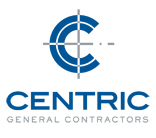If you are looking to get the most out of your next project, make sure you find a team of professionals who energetically engage in creative value engineering methods. This is not a crazy marketing gimmick; it is a reliable practice that involves a blend of functional problem solving and cost assessment.
What is Value Engineering?
By definition, value engineering (VE) is a systematic method for enhancing the project’s holistic value when it comes to the procurement of professional services to support envisioned plans. Value is often defined as the ratio of function to cost. With that understanding, value can be enhanced by either making a functional improvement or providing a reduction in project costs. It is also understood that any adjustment in function or cost, preserves the original intent and does not diminish the project’s vision.

Image Source: I Love Charts
A solid value engineering effort requires team collaboration.
Value engineering methods requires engagement for the entire team in order to provide real value to a project solution. These methods need to focus on the characteristics that are most important from the client’s point of view. Together, the team works through a creative process that takes 8 methodical steps, including:
- Orientation: During orientation, the team needs to get acquainted with the requirements for design and architecture, building systems, site requirements, functional specifications, initial cost estimates, conceptual project schedule and budget.
- Information: Based upon the project requirements, the team goes through a phase of discovery and information gathering in order to develop a high-level development plan, procurement plan, and sequencing and phasing plan.
- Function: Together, each team stakeholder takes a more detailed look at the project solution through the lens of each discipline, i.e. design, civil, structural, electrical, mechanical, construction, etc. Each discipline will refer to the design and architectural solution, building systems, site requirements, functional specifications, initial cost estimates, conceptual project schedule and budget requirements to craft a project approach.
- Creativity: While each stakeholder is forming their approach to a project based upon the envisioned requirements, each discipline has the opportunity to identify challenges and potential solutions to these challenges. There are areas where the team may be able to offer design solutions or provide reduced cost alternatives that do not sacrifice the design intent or the integrity of the structure’s function. Each discipline should have a creative approach for solving problems, reducing cost, and improving performance and quality requirements.
- Evaluation: Along with the creative approach, each discipline should prepare a forecast for project expenditures. The approach should aim to maintain a cost limit, as defined in the conceptual budget. Cost benefit analysis coupled with an evaluation of alternative design solutions will be helpful for identifying areas where you can achieve the best value. Feasibility studies are also helpful for identifying a realistic project approach for achieving all of the elements discussed in the “Orientation” phase. In addition, construction cost plans should also be developed.
- Recommendation: Once each stakeholder provides an evaluation, the team needs consider all aspects of the project, hammer out possible solutions and make recommendations based up a collective evaluation of alternatives, cost benefit analysis, and feasibility.
- Implementation: Once a collective set of recommendations are offered; project decisions for implementation are made. This is where the rubber meets the road and the project begins to take shape.
- Validation: Once the project is close to completion, it is a good practice to circle back and measure the overall effectiveness of the team’s ability to collectively conceive a more holistic design solution, identify a series of areas that need to be addressed to achieve the solution, create function, reducing cost and improving performance and quality.
When a project team believes in a creative and collaborative value engineering effort, you will find lower overhead and material costs, improved quality management and efficient resource allocation. The means and methods are planned and more simplified thus enabling in an overall a reduction in paperwork and decreased staffing costs. These results provide overall project efficiencies and, more importantly, greater value for project expenditures. If you are thinking about kicking off your next project, be sure to be on the lookout for a collaborative team who can bring together a reliable, creative value engineering effort!
